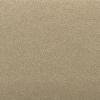Without wishing to state the obvious, we are living in unprecedented times. However, this year projects have slowly but surely started to come off hold and things appeared to settle into a version of the ‘new normal’ where we could finally breathe a sigh of relief. This relief was short-lived though as another unexpected issue arose that is looking likely to have a bigger and longer-lasting impact on our industry. We are of course referring to the increasing price of aluminum and market fluctuations.
Where does aluminum come from?
Let’s start by going back to the roots and looking at where aluminum comes from. This is something that we find customers are not always aware of and quite frankly it never used to matter because it was so readily available. However, it is now an almost daily conversation that our sales team are having. So, what is the answer?
As you may be aware aluminum has always been one of the Earth’s most abundant metals and is produced from bauxite mining. Bauxite is processed to create alumina, which is then refined into aluminum. Bauxite is most commonly found in Australia, China, Guinea, and India. The seemingly never-ending supply that the construction industry has enjoyed for many years is now experiencing some competition.
So what or who is driving the demand for aluminum?
In September, the price of aluminum hit highs of $3,000/tonne for the first time in over a decade. This increase has been attributed to multiple factors but let’s first look at why aluminum is so popular. The reason is that it has many benefits:
• It doesn’t corrode easily.
• It conducts electricity well.
• It is extremely lightweight compared to other metals.
• It is versatile and used in many things from drink cans to cellphones and solar panels to buildings.
• It can be recycled over and over again.
Aluminum has always had these benefits but the main one that is causing the problems is that it is seen as a ‘green’ product and therefore is attracting attention from other industries looking to switch to more environmentally friendly materials such as the car industry replacing steel with aluminum.
How else is the green economy impacting demand for aluminum?
With the global focus on reducing greenhouse gas emissions to meet agreed upon targets, aluminum is going to be considered by a lot of other industries looking for a greener material to produce their products and this will further drive-up demand and the price of aluminum even further.
As manufacturers know, once the price of a raw material goes up it is rare for it to go back down. Therefore the construction industry needs to find ways to reduce the impact that these market fluctuations and price increases have on their building projects and in particular with regards to the exterior façade cladding.
How can you reduce the impact of price increases?
The good news is that you can reduce the impact that these market conditions may be having on your project. Here are just some suggestions:
• Reserving stock – if you find a manufacturer that is able to reserve the stock that you need and hold the price at the time of the booking this can help you know that your project will not suddenly go up in price and perhaps push it over budget.
• Buffer stock – also know as 110% materials, this is the extra 10% that you will purchase as a contingency against damage, miscalculations or any of the multitude of other reasons that you often need extra material on a project and need to ensure that you have the material in the same finish and batch as the original material. If you find a manufacturer that holds this buffer / 110% stock for you and only charges you if/when you use it then this can greatly reduce the price of your stock order [more on 110% material here].
• Storing stock – if you are able to purchase the stock in advance then this obviously reduces the risk of the stock going up in price. However, this may not be the right option for everyone, and one reason is often that you have nowhere to safely store the stock until you need it. An option is to ask your supplier if they can store the stock for you until required. Even better would be if they could store it at no cost but this will depend on the manufacturer.
Market fluctuations are here to stay and it may be some time before they stabilize again. There are, however, ways that you can continue to use this versatile cladding material on your project without having to replace it with an inferior alternative as outlined above. Now’s time to get creative not only with your designs but also with specifying and/or purchasing from the right partner to suit all of your needs.
If this topic is of importance to you and you would like to discuss it further with our team, simply Contact Us.







